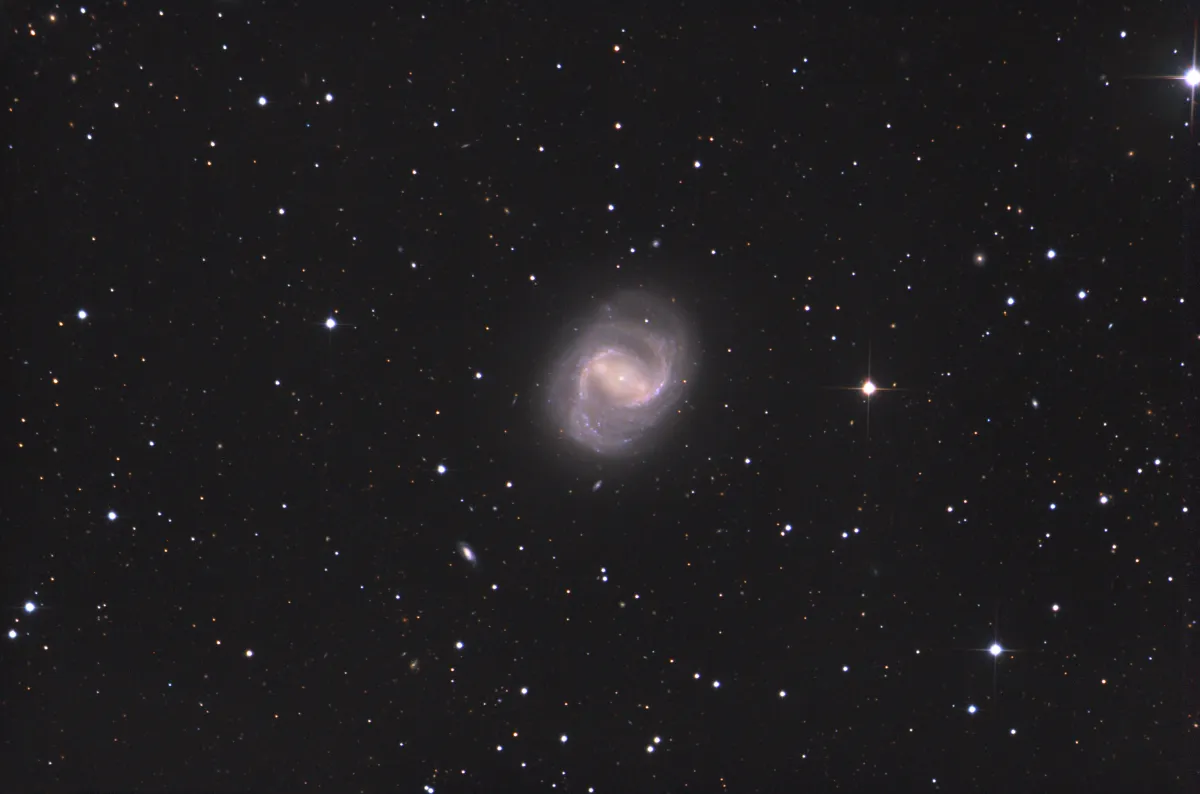Galaxies Messier 91 & NGC 4571

History
Charles Messier discovered the galaxy M 91 on 18 March 1781 and wrote: «Nebula without a star, in Virgo, above the previous number 90: The light is even weaker than the previous one [M 90]. Note: The constellation Virgo, especially the northern part, is one of the constellations that contains the most nebulae. This catalog contains thirteen of them that have been determined. The following numbers: 49, 58, 59, 60, 61, 84, 85, 86, 87, 88, 89, 90 and 91. All these nebulae appear without a star and you can only see them in a clear sky if they have the meridian happen. Most of these nebulae were found by M. Méchain.» [281]
At the coordinates that Messier stated at the time, there is no nebula that fits the description and so M 91 was considered lost for a long time. It was not until 1969 that an amateur astronomer discovered that Messier probably measured the position of M 91 using M 89, while he believed it was M 58 and that the position was therefore incorrectly entered. If you reproduce Messier's measurement error, you get to the position of NGC 4548 with an accuracy of 0.1 minutes in right ascension and 1' in declination. M 91 must therefore be NGC 4548. [217]
Physical Properties
M 91 is a beautiful bar-spiral galaxy of the morphological type SB_a and has a LINER-type active core. Measured distances range from 16.2 Mpc to 19 Mpc. [145]
| Designation | NGC 4548 |
| Type | Gx (SBb) |
| Right Ascension (J2000.0) | 12h 35m 26.4s |
| Declination (J2000.0) | +14° 29' 47" |
| Diameter | 5.2 × 4.2 arcmin |
| Photographic (blue) magnitude | 11.0 mag |
| Visual magnitude | 10.2 mag |
| Surface brightness | 13.4 mag·arcmin-2 |
| Position Angle | 150° |
| Redshift (z) | 0.001621 |
| Distance derived from z | 6.85 Mpc |
| Metric Distance | 16.200 Mpc |
| Dreyer Description | B, L, lE, lbM |
| Identification, Remarks | WH II 120; h 1345; GC 3093; M 91; UGC 7753; MCG 3-32-75; IRAS 12328+1446; CGCG 99-96; VCC 1615 |

Further Galaxies in that Area
The spiral galaxy NGC 4571 is located just under half a degree from M 91 and directly next to the 8.9 mag bright star SAO 100177. It was discovered by William Herschel on 14 January 1787 and in 1888 by Dreyer under the number 4571 in his «New General Catalog of Nebulae and Cluster of Stars». On 23 November 1900, the German astronomer Arnold Schwassmann looked at the place in the sky. He apparently misinterpreted the 15th mag star west of the galaxy as NGC 4571 and believed it was a new discovery, which is why the same galaxy later received a second entry in the «Index Catalogue» as IC 3588. [196]
NGC 4571 is a spiral galaxy of the morphological type SA (r) d and is located about 16.5 Mpc to 19.4 Mpc from Earth.
Finder Chart
The two galaxies are located in the constellation Coma Berenices. The best observation time is December to September.
